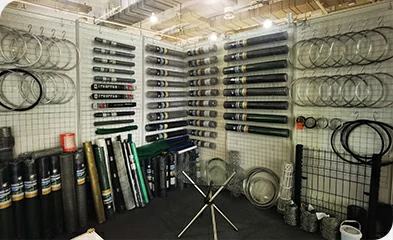 TEL:
+86-13102802206
TEL:
+86-13102802206
 Email:
fencenetting@china.com
Email:
fencenetting@china.com
 Language
Language
 TEL:
+86-13102802206
TEL:
+86-13102802206
 Email:
fencenetting@china.com
Email:
fencenetting@china.com
 Language
Language


The Fluctuating Price of Barbed Wire An Overview
Barbed wire has been a staple in agricultural practices, fencing, and security for over a century. Its invention in the late 19th century revolutionized land management, providing an efficient method for containing livestock and delineating property boundaries. However, like many commodities, the price of barbed wire is influenced by various economic factors, including material costs, demand fluctuations, and global trade dynamics.
Historical Context
Barbed wire was first patented in 1867 by Joseph Glidden, and since then, it has played a crucial role in shaping the American landscape. Initially made of twisted steel, the wire formed a strong barrier against livestock. Over the years, it has evolved, with modern advancements introducing galvanized and PVC-coated variants, enhancing durability and corrosion resistance. As of today, barbed wire remains essential for farmers, ranchers, and various industries, especially in areas requiring security and containment.
Factors Influencing Prices
1. Raw Material Costs The primary component of barbed wire is steel, and its price is subject to fluctuation based on global supply and demand. Economic factors such as mining output, energy prices, and geopolitical tensions can cause steel prices to soar or plummet. For instance, in recent years, tariffs imposed on imported steel have had a cascading effect on the prices of finished products, including barbed wire.
2. Production Costs The manufacturing process of barbed wire involves multiple stages—from wire drawing to barbing and coating. Each stage incurs costs associated with labor, machinery, and energy consumption. Any increase in these operational costs can lead to a rise in the final price of barbed wire.
3. Market Demand Demand for barbed wire often correlates with specific seasons or trends. For example, agricultural cycles may result in heightened demand in spring and summer as farmers prepare for livestock grazing. Additionally, trends in security awareness can drive demand from sectors like construction and residential fencing. Economic downturns can also impact demand, as both businesses and consumers tighten their budgets.

4. Geopolitical Events Events, such as trade disputes, natural disasters, or conflicts, can disrupt the supply chain for raw materials necessary for barbed wire production. Such interruptions often lead to scarcity, ultimately driving up prices. The COVID-19 pandemic, for instance, revealed vulnerabilities in global supply chains, affecting numerous industries, including metals and construction supplies.
5. Technological Advancements Innovation in the production process or materials can also influence pricing. For example, the introduction of high-tensile strength wire, though often more expensive, provides greater durability and security. Consumers may be willing to pay a premium for advanced products, impacting the overall market dynamics for standard barbed wire.
Price Trends and Projections
The price of barbed wire has experienced significant fluctuations over the past decade, mirroring broader trends in the steel market. In recent years, prices surged due to increased demand and rising steel costs. However, projections suggest that prices may stabilize as global production reaches pre-pandemic levels. Analysts believe that increased recycling efforts and the introduction of alternative materials may mitigate some of the raw material costs associated with traditional barbed wire.
As the world continues to evolve, so too will the needs and applications for barbed wire. While traditional uses in agriculture and fencing remain vital, new opportunities in security and urban development are emerging. Consequently, stakeholders must stay informed about market trends and global influences that could affect pricing.
Conclusion
In summary, the price of barbed wire is a reflection of a complex interplay between raw material costs, manufacturing processes, market demand, and external economic factors. As industries adapt to changing economic landscapes, it is crucial to remain vigilant about the market dynamics influencing pricing. Whether used for agricultural purposes, security measures, or boundary delineation, understanding the factors that govern barbed wire costs can help consumers and businesses make informed decisions, ensuring they obtain the best value for their investments.